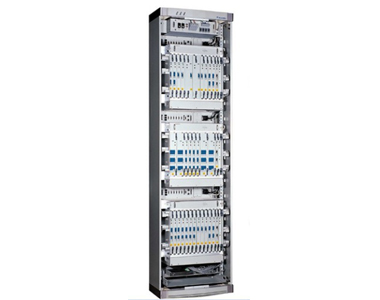CW6041200 OptiX Metro 6100
-
Model:
Metro 6100 -
Detail:
Huawei OptiX Metro 6100 -
Price:
Request For Quotation
- Free Technical Support
- Product Quality Protection
- On-time Shipment
- +86 755 8215 3862
- leo@uonel.com
- ywx39894
Basic Specification
The product supports various optical layer technologies.
The product provides the following wavelength resource allocation solutions: optical signal grooming capability and electrical signal grooming capability.
Optical Signal Grooming Capability
These two solutions are applicable to the OptiX Metro 6100 DWDM systems (DWDM system for short). Only FOADM is applicable to the OptiX Metro 6100 CWDM systems (CWDM system for short).
In a DWDM system, the optical signal grooming that is realized by the ROADM technology is classified into two types:
- Two-dimensional grooming (the wavelength grooming in two directions)
- Multi-dimensional grooming (the wavelength grooming in multiple directions)
With the ROADM technology and the full-band tunable optical module on the OTU board, the DWDM system realizes the dynamic networking of optical signals, and supports many types of complex networks, such as tangent rings, chain, and intersecting rings. In this way, the system ensures flexible grooming of optical signals in or between networks.
For details of optical signal grooming, refer to 8 Grooming of Wavelengths and Services.
Electrical Signal Grooming Capability
The OptiX Metro 6100 provides two layers of electrical signal processing capabilities.
On layer 1, the GE ADM technology ensures the electrical signal grooming of GE services between the OTU boards at 2.5, 5, or 10 Gbit/s. Hence, the following features are achieved:
- Better wavelength utilization
- Longer transmission distance without dispersion compensation
- Arbitrary cross-connection capability
On layer 2, the L2 switching technology enables the convergence of a maximum of 32 GE services into one wavelength. Hence, the local convergence of GE services in a piece of equipment is achieved.
For details of electrical signal grooming, refer to 8 Grooming of Wavelengths and Services.
Technical Specifications
The product supports DWDM and CWDM technical specifications.
Table 2-1 lists the transmission capacity and the upgrade and expansion ability for DWDM and CWDM technical specifications.
| Item | DWDM System | CWDM System |
|---|---|---|
|
Maximum capacity (Gbit/s) |
1600 a |
40 |
|
Used band |
C-EVEN: 1529.55 nm-1560.61 nm |
1311nm-1611 nm |
|
Channel spacing (nm) |
0.8 |
20 |
|
Frequency spacing (GHz) |
100 |
- |
|
Maximum channel count |
40 |
16 |
|
Maximum accessed rate for each channel (Gbit/s) |
40 a |
2.5 |
|
Maximum add/drop traffic b (wavelength count) |
40 |
16 |
|
Whether support optical amplifier |
Yes |
No |
|
Applied fiber |
G.652/G.653 |
G.652 |
|
Upgrade and expansion |
Supporting upgrade of each wavelength of C band at 2.5 Gbit/s, 5 Gbit/s, 10 Gbit/s and 40 Gbit/s rates. |
Supporting upgrade of each wavelength at 2.5 Gbit/s rate. |
|
a: This value is based on the scenario where the DWDM system uses only 40 Gbit/s wavelengths to access signals. b: The maximum add/drop traffic is the add/drop traffic in the OADM station that is formed by back-to-back OTMs. The DWDM system can block and pass through any channel through the DWC board or the WSD9, WSM9, RMU9 and WSMD4 boards. The DWC is the dynamic wavelength control board. The WSD9 is the nine-port wavelength-selective switching demultiplexer board. The WSM9 is the nine-port wavelength-selective switching multiplexer board. The RMU9 is the nine-port ROADM multiplexing board. The WSMD4 is the 4-port wavelength selective switching demultiplexing/multiplexing board. In this way, the system can dynamically add/drop wavelengths to realize the ROADM. |
||
Transmission Capacity
The transmission capacity varies with the system type.
- A DWDM system can access a maximum of 40 wavelengths. The rate of each can be 2.5 Gbit/s, 5 Gbit/s, 10 Gbit/s, or 40 Gbit/s.
- A CWDM system can access a maximum of 16 wavelengths. The rate of each can be 2.5 Gbit/s.
Transmission Distance
The transmission distance varies with the system type.
Transmission Distance Specification in DWDM Systems
According to the type of fibers, the DWDM system uses the forward error correction (FEC), SuperWDM, dispersion compensation and optical equilibrium technologies by option and can support the long haul transmission without an REG.
The transmission distance specifications on the G.652 fiber of the DWDM system are as follows:
- When the FEC and SuperWDM (DRZ coding) technologies are used, the systems allow an attenuation of 20 x 22 dB for transmission without an REG.
- When 40-wavelength access is used, the DWDM system allows an attenuation of 46 dB for long-haul single-span transmission.
Transmission Distance Specification in CWDM Systems
On the G.652 fiber, the CWDM system allows the 80 km single-span transmission.
Networking Capability
The product provides a variety of networking mode.
The OptiX Metro 6100 supports point-to-point, chain and ring networking modes.
The OptiX Metro 6100 can also be used as equipment for the convergence layer and work with the OptiX Metro 6040 to offer a complete Metro WDM solution.
Integrated System and Open System Compatibility
There are two types of DWDM systems: integrated DWDM system and open DWDM system.
The open DWDM system is configured with the OTU boards to convert a wavelength into a G.694.1-compliant wavelength.
The integrated DWDM system does not need the OTU boards when its client-side equipment (for example, the SDH equipment) has optical transmitter interfaces that comply with G.694.1.
Service Access
The product can access services of different types by using different optical transponder boards (OTUs).







